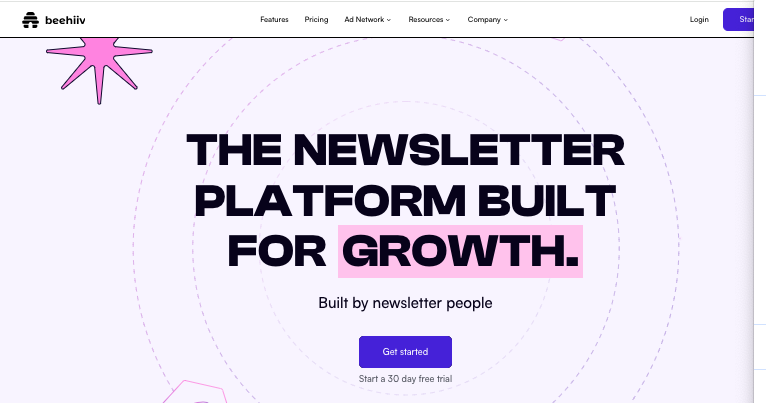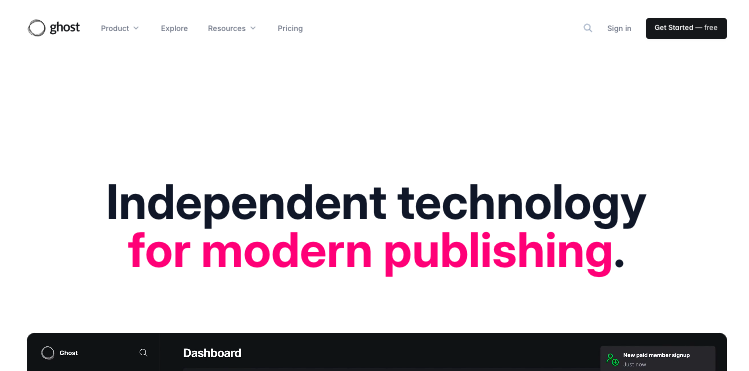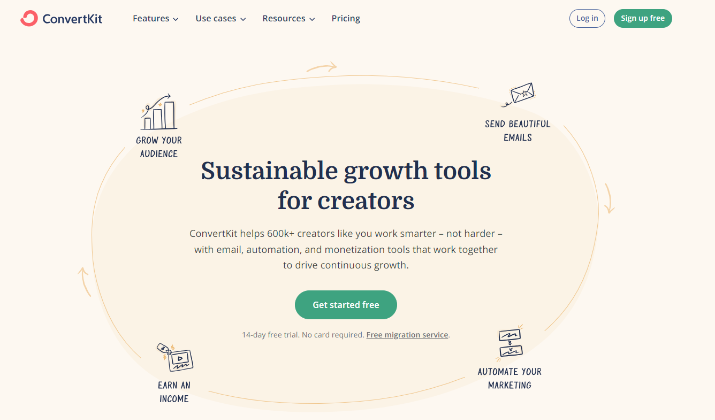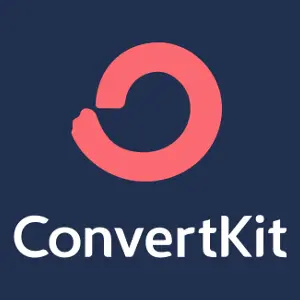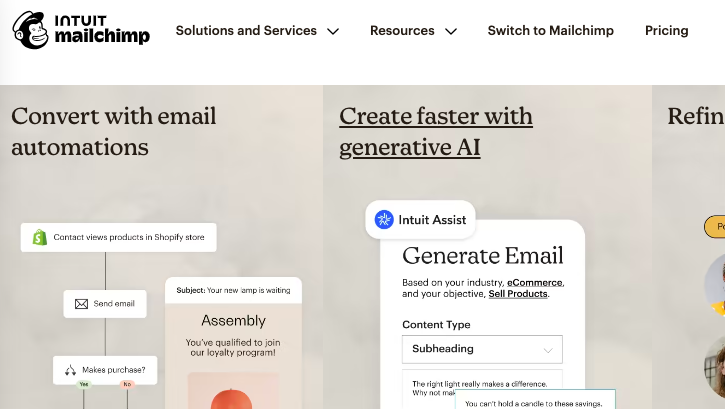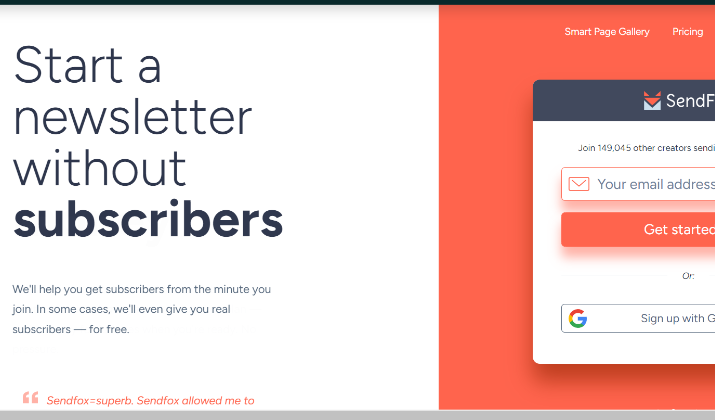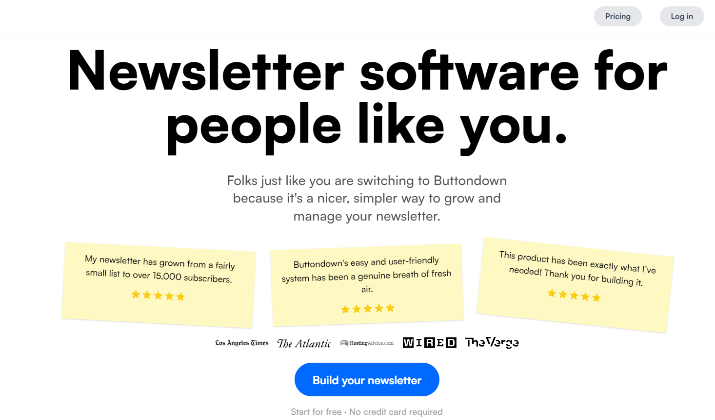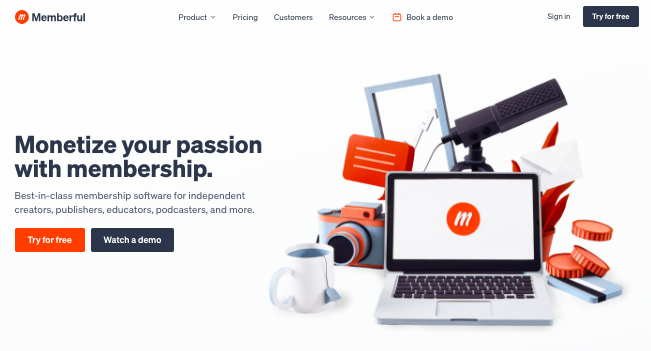Substack is an American online platform that allows journalists, writers, and other content creators to publish newsletters and establish a subscription-based audience.
It provides tools for authors to create and distribute their newsletters, manage subscriptions, and monetize content via paid subscriptions.
Independent creators can offer digital newsletters directly to their audience on either a free or paid basis, with Substack earning a percentage of the subscription revenue.
What’s the Need for Exploring Substack Alternatives?
While Substack offers a range of features and customization options, it has certain limitations.
Limited designs, basic analytics, lack of A/B testing and automation, promotional challenges and not so advanced email marketing features are some of the factors that necessitate users to look for alternatives.
If you have been using Substack too, and are looking for better audience engagement, monetization options, or enhanced customization tools, there are several Substack alternatives you can bet on.
In this article, we’ll explore some of the best, helping you switch to a better tool.
Take a look.
Also Read: Beehiiv vs GoHighLevel
1. Beehiiv
If you’re looking for a powerful newsletter platform to expand your audience and monetize your content, Beehiiv is the perfect Substack alternative.
With its focus on scaling newsletters and building an advertising network, Beehiiv helps writers amplify their reach and generate income through their newsletters.
With Beehiiv, you can easily build and grow your audience, reaching more subscribers and readers.
Whether you’re just starting or have an established following, Beehiiv provides the tools you need to attract new subscribers and cultivate a loyal community.
One of Beehiiv’s standout features is its advertising capabilities.
Beehiiv allows writers to match brands and advertisers to their newsletter topics seamlessly, enabling native ad placement that doesn’t disrupt the reader experience.
This opens up new opportunities for monetization and allows you to generate income from your newsletters.
While Beehiiv offers robust audience building and advertising features, it’s important to note that it may not have the advanced email segmentation and personalization options available in other platforms.
All-In-One newsletter platform — Created by the same team that built and scaled Morning Brew to millions of subscribers. Get 30-day trial + 20% OFF for 3 months.
However, if your main focus is scaling your newsletter and building an advertising network, Beehiiv offers the perfect solution.
With its user-friendly interface and intuitive features, Beehiiv makes it easy for writers to create professional-looking newsletters.
You can customize your email templates, add images, and format your content to create visually appealing newsletters that resonate with your audience.
Whether you’re a seasoned writer or just starting, Beehiiv’s free tier allows you to get started without any upfront costs.
As your audience grows, Beehiiv offers paid plans that accommodate up to 100,000 subscribers, providing ample scalability options for newsletter creators.
Compared to other newsletter platforms like Substack, Beehiiv offers a unique focus on audience scaling and advertising, making it an attractive choice for writers who want to maximize their reach and profitability.
Give Beehiiv a try and take your newsletters to new heights.
2. Ghost
Ghost is an excellent alternative to Substack when it comes to blogging features.
As an open-source platform, Ghost offers similar features to Substack, but with additional advantages for bloggers and content creators.
One of the key benefits of Ghost is its robust customization options. With Ghost, you have the freedom to create a unique and personalized blog that reflects your style and brand.
The platform provides a wide selection of themes and templates, allowing you to design a visually appealing website that resonates with your audience.
Another standout feature of Ghost is its multi-author support. This makes it an ideal platform for teams, publications, and collaborative projects.
Whether you’re running a magazine, a news outlet, or a group blog, Ghost allows multiple authors to contribute to a single publication seamlessly.
Ghost offers various subscription plans to accommodate different needs and subscriber numbers.
The pricing starts from $11/month and goes up to $249/month.
When it comes to monetization, Ghost takes a different approach compared to Substack.
Ghost CMS offers various monetization options, including memberships, allowing you to generate revenue from your blog and newsletters.
Unlike Substack, Ghost doesn’t take a percentage of your earnings, giving you more control and potentially saving you money in the long run.
Ghost CMS also shines in terms of search engine optimization (SEO). It offers all the essential features necessary for optimizing your content for search engines, including meta tags, customizable URLs, and XML sitemaps.
This makes Ghost an excellent choice for creators who prioritize organic traffic and want their content to be easily discoverable.
Also Read: Substack vs Beehiiv vs ConvertKit
3. ConvertKit
ConvertKit is a powerful email marketing and automation platform that serves as an excellent Substack alternative.
Designed specifically for creators in fields such as blogging, journalism, and podcasting, ConvertKit offers a comprehensive suite of tools to help you build and manage your email marketing campaigns effectively.
With ConvertKit, you can easily create and customize opt-in forms to capture email addresses and grow your subscriber base.
The platform also provides intuitive audience segmentation features, allowing you to target specific groups of subscribers with personalized content.
This ensures that your email campaigns are more relevant and engaging, leading to higher open and click-through rates.
One of ConvertKit’s standout features is its powerful automation capabilities.
You can set up automated email sequences, known as email funnels or drip campaigns, to deliver targeted content to your subscribers at the right time.
This saves you time and effort by nurturing your audience on autopilot and guiding them through your content or sales funnel.
ConvertKit also offers a robust landing page builder, enabling you to create visually appealing and conversion-focused landing pages to promote your products, services, or lead magnets.
With about 40 landing pages hosted on ConvertKit, you have plenty of options to showcase your offerings and capture leads.
ConvertKit makes it easy to create, send and manage your email marketing campaigns.
Grow your list to 1,000 subscribers for free. Learn more.
The platform’s A/B testing feature allows you to experiment with different email subject lines, content, and CTAs to optimize your campaigns for better results.
Unlike Substack, which does not offer A/B testing capabilities, ConvertKit empowers you to make data-driven decisions and improve the performance of your email marketing efforts.
ConvertKit’s pricing structure is flexible, with a free plan available for up to 10,000 subscribers.
For larger subscriber lists and additional features, paid plans start at $29 per month. The platform’s affordability makes it an attractive option for creators looking to maximize their email marketing ROI.
ConvertKit also offers valuable resources for creators, such as The ConvertKit Bootcamp.
The educational program provides in-depth training on email marketing best practices, list building strategies, and monetization techniques.
4. Medium
Launched in 2012 by Evan Williams, co-creator of Twitter, Medium has become a popular Substack alternative and a vibrant blogging platform for writers and readers alike.
Known for its massive readership, Medium provides writers with a global platform to connect with diverse audiences and share their ideas.
Unlike a standalone website, Medium functions as a distribution channel, allowing content creators to reach a wider audience and gain exposure.
The platform’s clean and user-friendly interface focuses on quality content, making it an ideal choice for writers who prioritize the presentation of their work.
For writers considering Medium as a publishing platform, there are several key factors to consider.
Understanding Medium’s guidelines is crucial to ensure compliance and a smooth publishing experience.
Additionally, exploring alternative platforms such as Feather, LinkedIn, HubPages, and Vocal.Media can help writers find the best fit for their needs in terms of content ownership, SEO control, and impact on branding and conversions.
Medium offers writers the opportunity to collaborate with other authors and gain visibility through its partner program.
Through the partner program, writers can monetize their content based on the engagement levels of Medium members, providing an avenue for earning income from their writing.
While features like custom calls to action, tracking pixels, and full control over metadata are not available on Medium, the platform’s wide reach and engaged audience still make it an attractive option for writers seeking to share their thoughts and ideas with the world.
Also Read: Beehiiv vs Revue
5. Mailchimp
When it comes to email marketing, Mailchimp is a top choice for businesses looking to connect with their audience and optimize their campaigns.
With its range of features and user-friendly interface, Mailchimp proves to be a reliable Substack alternative for those seeking a more comprehensive email marketing solution.
One of the key advantages of Mailchimp is its audience segmentation capability, allowing you to target specific groups of subscribers based on their interests, location, or behavior.
This enables you to create personalized content that resonates with your audience and drives engagement.
Whether you’re sending newsletters, promotions, or updates, Mailchimp’s segmentation features ensure that your emails reach the right people at the right time.
Furthermore, Mailchimp’s campaign tracking feature provides valuable insights into the performance of your email campaigns.
You can track open rates, click-through rates, and even analyze subscriber behavior to refine your email marketing strategy.
These analytics allow you to make data-driven decisions and optimize your campaigns for maximum impact.
In addition to its robust email marketing capabilities, Mailchimp offers a range of other features to enhance your online presence.
From an AI-powered drag-and-drop email builder to landing pages, websites, and blogs, Mailchimp supports your overall marketing strategy.
It even provides a native paid newsletter subscription tool and a feature for selling digital products, allowing you to monetize your content and grow your business.
When it comes to pricing, Mailchimp offers a free plan with limited functionality, making it accessible for small businesses and individuals starting out with email marketing.
For more advanced features and scalability, Mailchimp’s paid plans start at $13 per month if billed annually, catering to businesses of all sizes.
With its comprehensive features, audience segmentation, and campaign tracking capabilities, Mailchimp offers creators an effective platform for email marketing and campaigns.
Whether you’re a small business owner or an established entrepreneur, Mailchimp can help you connect with your audience and drive results.
6. Patreon
Patreon works differently than other alternatives on this list but it is a worthy alternative to Substack.
Established in 2013, Patreon is a groundbreaking platform that pioneered the monetization of online audiences for independent creators.
It has enabled writers, musicians, and other creatives to receive the financial support they need to continue producing their work.
Patreon stands out as a platform that provides comprehensive support for independent creators.
It operates on a subscription model, allowing creators to offer exclusive content and perks to their supporters in exchange for regular financial contributions. Patreon takes a 5% cut of creators’ membership fees, in addition to other fees.
One of the key advantages of using Patreon is its focus on building a direct relationship between creators and their audience.
It empowers creators to offer unique and exclusive content to their patrons, fostering a sense of community and loyalty.
Unlike some other platforms, Patreon allows creators to receive financial support for their ongoing work, providing a stable income stream.
Creators can use Patreon to develop a sustainable business model and continue producing the content their audience loves.
Patreon’s success in the industry has led to its recognition as a trusted platform that enables independent creators to thrive.
As an alternative to Substack, it offers creators the opportunity to monetize their work while retaining creative control.
7. SendFox
When it comes to email marketing and automation, SendFox emerges as a powerful Substack alternative.
With SendFox, you can create, send, and track highly effective email marketing campaigns that engage your audience and drive conversions.
Whether you’re a small business or a large enterprise, SendFox has the tools and features you need to succeed.
One of the standout features of SendFox is its pricing flexibility. For small lists, SendFox provides a generous $0 plan, allowing you to get started without breaking the bank.
This is a great option for businesses just starting out or individuals looking to explore the world of email marketing.
For larger lists, SendFox offers lifetime plans starting $49.
SendFox takes the complexity out of email marketing by providing simple and intuitive tools.
The platform offers customizable email templates, automation capabilities, list segmentation, and powerful analytics.
This allows you to create personalized and targeted email campaigns that resonate with your subscribers.
Additionally, SendFox understands the importance of data privacy and compliance.
The platform adheres to industry best practices and provides robust security measures to protect your sensitive information and ensure your email campaigns are delivered seamlessly.
Whether you’re a content creator, entrepreneur, or small business owner, SendFox offers the tools and affordability you need to succeed.
8. Buttondown
Another platform similar to Substack is Buttondown.
A simple and affordable newsletter platform with a free plan for up to 100 subscribers, Buttondown has a personal touch and is bootstrapped without outside investors.
Buttondown is GDPR-compliant and does not collect any data about users or their subscribers. It has analytics turned off by default, prioritizing user privacy.
It allows users to write newsletters using Markdown, enabling efficient and distraction-free content creation without clunky email markup.
Buttondown makes it easy to migrate newsletters from other providers, handling the heavy lifting of transferring archives, subscribers, and payment information.
The platform allows creators to offer paid newsletter subscriptions with custom pricing tiers, unlike Substack’s 10% revenue cut.
In addition, Buttondown provides a REST API and webhooks to integrate with other tools, enabling newsletter automation and custom workflows.
Overall, Buttondown positions itself as a more focused, privacy-centric, and customizable alternative to Substack, with an emphasis on ease of use and content creation.
9. Flodesk
Flodesk is an email marketing platform that helps entrepreneurs design beautiful, high-converting emails.
The tool offers a library of gorgeous, customizable email templates that are easy to edit and personalize to your brand.
You can change colors, fonts, add your own images, and more to create unique emails that match your style.
Flodesk’s email builder is very user-friendly and intuitive, allowing you to create stunning emails without needing any design skills or third-party software.
The real-time preview shows how your email will look across different screens.
Flodesk offers unlimited emails and subscribers for one low monthly price, so you’re never penalized for growing your list. Members enjoy a 15% higher open rate than the industry average.
Flodesk makes it easy to create attractive opt-in forms and landing pages to grow your email list.
You can choose from popup, embedded inline, or full page form templates. Forms can be published as a landing page even without a website.
Additionally, Flodesk’s automation features, called Workflows, allow you to build relationships and make sales on autopilot by sending the right message to the right people at the right time. Workflows are easy to set up and customize.
Flodesk provides analytics to help you optimize your email marketing, showing you top-performing emails, open rates, click-through rates, and more.
You can use these insights to replicate successful emails and improve results over time.
Flodesk is a great choice for beginners and experts alike who want to create beautiful, high-converting emails that build relationships with subscribers.
10. Memberful
Finally, you have Memberful.
Memberful is a best-in-class membership software and WordPress plugin used by some of the web’s biggest creators, publishers, and independent media companies.
It helps to generate recurring revenue by selling subscription plans while protecting access to their content.
Among its key features are:
- Protecting members-only content and restricting access based on membership level
- Integrations with popular third-party services like Mailchimp, Discord, ConvertKit, Klaviyo, and Google Analytics
- Automatically syncing Memberful membership data to WordPress or importing a list of existing members
- Easily accepting payments through Stripe with a streamlined member checkout process
- Creating multiple membership plans and upgrades to allow tiered access to different areas of a website
Memberful allows users to maintain full control and ownership of their audience, brand, and business.
It is trusted by some of the most successful membership businesses on the web, including Colossal, Vox, Relay FM, and The Mythical Society.
The platform also offers world-class customer service, with a dedicated team that goes the extra mile to understand users’ needs and provide personalized assistance.
Memberful is designed to help independent creators, publishers, educators, podcasters, and more monetize their passion by offering memberships and engaging their audience directly.
Also Read: Best Times To Post On Beehiiv
Conclusion
As you can see, there are several newsletter, publishing, and email marketing platforms that offer great features and affordable pricing plans.
Platforms like Ghost and Medium are perfect alternatives for bloggers and writers who want to engage with a community of readers and writers.
For an email marketing platform with automation capabilities, ConvertKit and Mailchimp are both reliable options.
If you are looking for a powerful newsletter platform though, Beehiiv stands out.
It gives creators adequate monetization opportunities they need to thrive and grow.
With advanced features like personalized content, analytics tools, and a referral program, Beehiiv is a comprehensive platform to grow subscriber base and maximize revenue potential.


